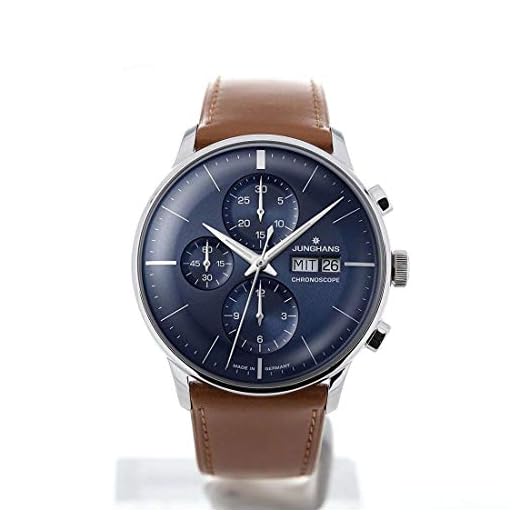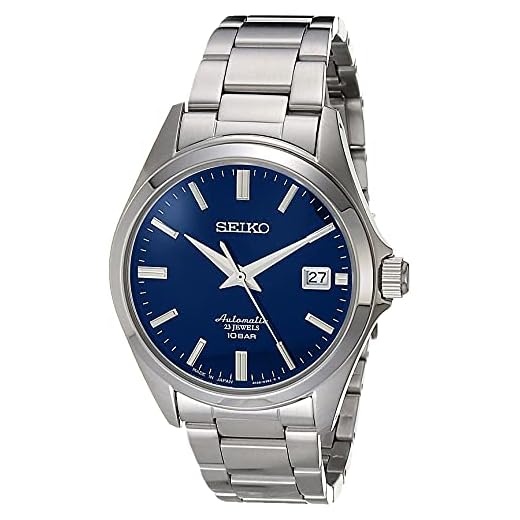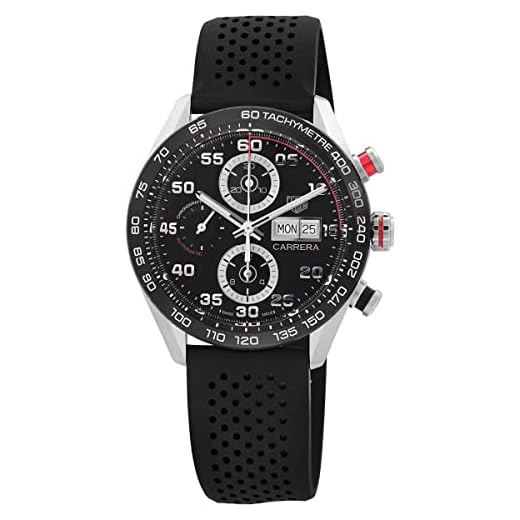Can a mechanical watch survive the magnet monster? Timepieces that won’t make your MRI images (or your shift) go sideways.
Bold fact: small ferrous parts on a wristwatch can spoil an MRI image — and that’s embarrassing for everyone. Some modern mechanical watches, however, are built with anti‑magnetic tech that makes them safer around high fields.
This roundup looks at eight mechanical watches people consider for MRI techs. Short notes, practical warnings, and one clear top pick so you can choose a real-world option without guesswork.
Top Picks








Rolex GMT-Master II Blue-Black Bezel
A luxury, high-precision GMT that combines exceptional finishing and robust engineering. Outstanding for travelers and collectors, but its cost and ambiguous MRI suitability mean verification is needed before clinical use.
Overview
A flagship GMT model known for its two-tone ceramic bezel, refined casework and Rolex's meticulous assembly standards. It combines practical features (second time zone, date) with the presence and durability expected from a major luxury brand.
What stands out
MRI-relevant considerations
Practical verdict
This is a superb high-end mechanical for everyday wear and travel. For MRI techs, it can be a durable, well-built personal watch — but treat it as a luxury item and confirm magnetic behaviour before exposing it to strong fields. If the priority is guaranteed non-magnetism rather than luxury, seek watches explicitly rated for low magnetic susceptibility.
Omega Seamaster Automatic Blue Dial
A muscular dive watch with proven water resistance and high-quality finishing; some variants include silicon balance springs that improve magnetic resistance. Great for professionals who want a rugged mechanical daily wearer, with a caveat to confirm movement specifics for MRI use.
Overview and use-case
A professional-grade dive watch built for durability and everyday usability. It combines classic dive-watch cues with a high-quality automatic movement and a solid stainless-steel case suited to active use.
Notable specifications and benefits
MRI and magnetic-safety considerations
Practical insight
For MRI techs who want a rugged, attractive mechanical that can handle active use, select a Seamaster variant with known silicon components or explicitly documented magnetic resistance. Otherwise, treat the watch conservatively and avoid exposing it directly to high-field zones without verification.
Junghans Meister Chronoscope Blue Dial
A tasteful, subtly styled chronograph that emphasizes clarity and refinement, aided by convex plexiglass with a coating and a well-regulated movement. Excellent for professionals who favor understated design, though magnetic resistance should be checked for clinical safety.
A refined chronograph for daily elegance
Junghans Meister Chronoscope focuses on subtlety and legibility rather than overt sportiness. The blue sunray dial, thinish profile for a chronograph, and convex plexiglass give it a distinctive, classical look that reads as dressy yet functional.
Materials and movement highlights
MRI considerations
Final practical note
An excellent choice for professionals who value quiet elegance and readable design. For MRI techs who want a watch for both clinic and leisure, verify magnetic behaviour and follow workplace rules — this model is strong on style and everyday wear, less focused on magnetic-proof specification.
Seiko 4R35 Blue Dial Automatic Watch
A well-executed Japanese automatic with a trusted 4R35 movement and classic Seiko build quality. Excellent value for everyday wear, though antimagnetic properties are not central to this model and should be confirmed for MRI use.
Why professionals like it
Seiko's mainstream automatics are known for dependable day-to-day performance, ruggedness and straightforward maintenance. This particular model uses the 4R35 calibre, which is widely understood and serviceable by many watchmakers.
Useful features and performance
MRI and magnetic considerations
Practical recommendations
A great everyday automatic for those who want reliability and value. For MRI techs who prioritize verified low magnetic susceptibility, either test this watch with a magnetometer or use it only outside high-field areas. Otherwise, it’s an excellent daily-wear mechanical.
TAG Heuer Carrera Chronograph Black Dial
A sporty, well-finished automatic chronograph with a modern aesthetic and reliable calibre. Good for those who want chronograph functionality in a durable package, but antimagnetic credentials are not guaranteed without specific movement details.
What it offers
A contemporary Carrera chronograph that blends sporty cues with refined finishing. It’s aimed at enthusiasts who want a functional stopwatch, bold wrist presence and a well-appointed dial.
Key technical and practical notes
Considerations for MRI techs
Practical summary
A compelling chronograph for daily wear and active use with high-quality finishing. It’s best suited to MRI techs who value the chronograph function and are prepared to verify magnetic behavior or reserve it for non-magnetized zones.
MIDO Commander Automatic Women's Watch
A refined tonneau/round hybrid dress watch that offers a classic look, sapphire crystal and Swiss automatic movement. Attractive and reliable for clinical professionals who want a more formal wrist option, but verify magnetic tolerance if required.
Design and target audience
The MIDO Commander is a classic, slightly dressier automatic intended for those who want Swiss quality in a compact package. It’s especially well-suited to professionals who prefer understated elegance on the wrist.
Key features and materials
MRI-specific notes
Verdict and practical use
An attractive, well-built automatic watch for dressing up or daily office wear. If magnetic safety is a must, treat it like most dress automatics: verify before exposure or limit use to safe areas.
Gute Skeleton Automatic Blue Hands Watch
An extremely affordable skeleton automatic that delivers a mechanical look and self-winding convenience for a very low price. Good as a disposable or entry-level everyday mechanical, but expect variable accuracy and build quality.
What it is and who it's for
A compact, entry-level skeleton automatic that prioritizes visual impact and affordability over precision engineering. It works as a basic mechanical wristwatch for people who want the look of exposed movement and automatic winding without spending much.
Key features and everyday performance
Benefits and practical considerations for MRI techs
Limitations and safety notes
Practical tip: replace the strap and have a watchmaker check the movement if you plan to use this frequently. For MRI environments treat this as an economical fashion watch rather than a professionally certified antimagnetic instrument.
A ALPS Skeleton Automatic Luxury Look Watch
A visually striking skeleton-style watch at a very low price point, designed to imitate luxury aesthetics. Good for occasional wear or as a low-cost fashion piece, but expect variable quality and uncertain magnetic properties.
Who this serves
A ALPS' skeleton piece targets buyers who want the look of a luxury skeleton watch without the price. It’s primarily a fashion statement, not a precision instrument.
Features and first impressions
MRI and clinical use warnings
Practical advice
Use this as a low-stakes fashion watch. If you need a reliable antimagnetic mechanical for work near MRI scanners, consider investing in a watch with documented magnetic resistance or dedicated anti-magnetic designs and have any watch tested before bringing it into magnetized zones.
Final Thoughts
Top pick — Omega Seamaster Automatic (choose a Si14 / Master Chronometer variant): The Seamaster is the best pick for MRI techs who want a mechanical watch that can actually stand up to magnetic exposure. Some Seamaster variants use silicon (Si14) balance springs and Omega’s Master Chronometer standard, which gives genuine anti‑magnetic performance (many Master Chronometer movements resist up to 15,000 gauss). Strengths: proven engineering, rugged dive‑watch construction, and real anti‑magnetic options. Ideal use case: MRI techs who want a mechanical daily wearer and will verify they have a Si14/Master Chronometer movement before using it near the scanner.
Runner‑up — Rolex GMT‑Master II Blue‑Black Bezel (verify before use): The GMT‑Master II is an outstanding luxury tool watch with high‑quality finishing and robust engineering. It can be appropriate for MRI techs who also travel and want a premium GMT, but its MRI suitability is ambiguous unless you confirm the movement and materials (Rolex uses paramagnetic components in many movements but ferrous parts can still exist). Strengths: luxury build, excellent timekeeping, and versatility for travel. Ideal use case: MRI techs who primarily wear the watch outside the scanner room but want a mechanically superb option — only wear inside MRI fields after explicit verification from Rolex or an authorized watchmaker.
Practical final note: For guaranteed safety inside the scan room, prioritize watches explicitly specified by the manufacturer as anti‑magnetic (Si14 / Master Chronometer or similar) and get written confirmation. Avoid the budget skeletons and models without documented magnetic resistance — they look nice but offer uncertain protection around strong MRI fields.


Nice that you included the MIDO Commander as a women’s option. I like the dressier look for meetings outside of the scanner.
Quick question: does anyone know if the strap on that model is easy to swap for a smaller wrist? I’m between sizes and prefer leather swaps.
Thanks, Olivia. The MIDO Commander generally uses standard lug widths (check the product spec for mm). If it’s a common lug width (18mm/20mm etc.), you can easily swap the strap for a smaller leather one. If the listing doesn’t state lug width, ask the seller or check official specs on MIDO’s site.
I swapped the strap on my MIDO last month — it’s straightforward. Just get the right lug width and a spring bar tool. If you’re not confident, a local watch shop can swap it in 5–10 minutes.
Solid roundup — I was particularly interested in the Omega Seamaster note about silicon balance springs.
A couple of practical questions for the community:
1) How do you confirm a specific Amazon listing is for a variant with a silicon balance spring? Sometimes the listing doesn’t include movement cal. numbers.
2) Is calling the manufacturer the only reliable way, or are there databases to check movement specs by reference number?
I work night shifts and don’t want to call customer service during odd hours 😅
One more tip: sellers sometimes list the calibre (e.g., ‘Omega Cal. 8800’ etc.). A calibre number makes it easy to look up anti‑magnetic claims on the maker’s site.
If you want a quick check during odd hours, try the manufacturer’s mobile site or their PDF catalogs — many include movement details.
I agree with admin. Also, look for phrases like ‘Si balance spring’, ‘anti‑magnetic’, or ‘15,000 gauss’ in specs. Those are giveaways. If none are present, assume it’s not guaranteed.
Good points. Best approach: check the listing for the model/reference number (like 210.30.42.20.03.001 for the Omega in our list). Then search the brand’s official site or trusted watch forums (WatchBase, Fratello, Hodinkee articles) for movement details. Manufacturer support is reliable but slower — forums and brand spec pages are quicker. If the listing lacks reference numbers, treat it as uncertain.
And finally — if in doubt, buy from a reputable dealer who can confirm the exact variant. Amazon third-party sellers sometimes mix references.
Great roundup — thanks! I’m leaning toward the Seiko for everyday wear (trusty 4R35 is hard to beat) but I keep worrying about MRI safety.
The Rolex and Omega look amazing, but I can’t justify bringing a Rolex into a clinical setting. Does anyone here actually wear one of the higher-end picks while on shift, or do you stick to the cheaper options from the list?
Also, any tips on confirming magnetic tolerance before buying? amazon listings rarely mention it.
Thanks, Emily — glad it helped! For MRI environments the safest route is to check the movement spec (look for ‘antimagnetic’ or silicon balance spring mentions) and contact the seller/manufacturer with the model/movement number. If that’s unclear, many techs opt for lower-cost mechanicals or remove watches inside the magnet room. I also noted that the Rolex’s MRI suitability is ambiguous — verify before clinical use.
One more thing: some brands (Omega, TAG Heuer) list specific cal. numbers like ‘Co‑Axial’ or ‘Si balance spring’ in product specs. Search that and then look up the movement’s anti-magnetic rating on the maker’s site.
I’m an MRI tech and I wear a basic Seiko on shift. I wouldn’t risk a Rolex at work — too many variables. If you want something nicer for outside of work, get the Omega but keep a cheaper backup for the scanner.
I really appreciate the Junghans pick — that chronoscope is so clean.
I have a question about chronographs vs three-hand watches in the MRI context:
– Do the extra pushers or chronograph modules create more ferrous parts that could be an issue?
– Or is it mainly about the movement’s balance spring and inner components?
Been trying to understand whether I should prioritize simple movements for safety or if a well-built chronograph with decent specs is ok.
Sorry for the long post, just nerding out.
Also consider serviceability — if you wear the watch at work and it gets magnetized, easier/cheaper service is preferable. Chronos can be pricier to fix.
From what I’ve read, chronographs can have more tiny parts, which might mean more opportunities for ferrous components, but it’s not a hard rule. If you can find the movement (e.g., Valjoux 7750 vs an in-house with silicon parts), compare them.
Good questions. The main concern is the movement materials (balance spring, escapement) and any ferromagnetic components inside the case. External pushers/buttons are less of an issue for magnet attraction but can complicate seals and overall construction. If the chronograph movement is based on a well-specified calibre with antimagnetic parts, it’s often fine — but you really need movement specs to be sure.
Practical tip: if you’re unsure, wear the chronograph outside the magnet room and keep a simple, known-nonmagnetic watch (or none at all) when scanning. Works for me.